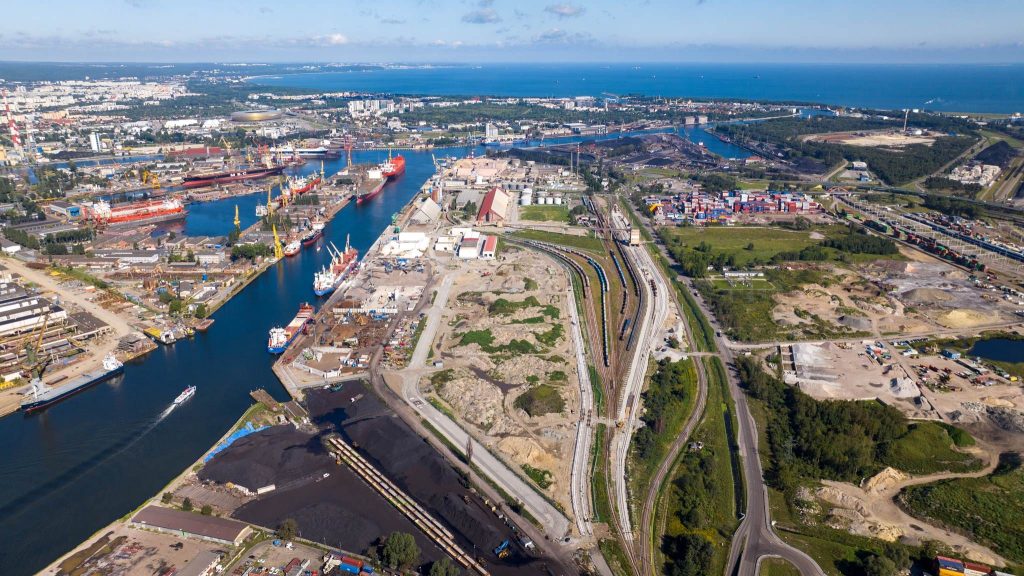The Poland-Romania rail link will be debated in Vilnius from Thursday at the Three Seas Initiative Summit, which will be attended by Romanian officials.

Romania will be represented by the country’s President, Klaus Iohannis, who will attend the ninth edition of the Three Seas Initiative (TSI) Summit in Vilnius, Republic of Lithuania, on 11 April 2024, according to Romanian Presidency.
“The leaders of the participating states will discuss at the meeting how the Initiative should develop and adapt, in the complex regional context, including in relations with partners in the neighbourhood, but also at the global level, as well as in terms of boosting investment and implementing strategic interconnection projects, in the three core areas of the Initiative – transport, energy, digital,” the Romanian Presidency says.
Klaus Iohannis will also address the prospect of boosting connectivity with Ukraine and the Republic of Moldova, both of which are associate participants in the Initiative, following the decisions taken at the Bucharest Summit. He will also stress that strengthening the resilience of the region as a whole is a vital necessity in the current geopolitical context. In this regard, President Klaus Iohannis will highlight, in particular, the added value of the Rail2Sea and Via Carpathia projects, whose implementation will improve military mobility and infrastructure resilience in the region.
Romania hosted the previous edition of the I3M Summit in September 2023, where a substantial Joint Declaration was adopted, which was an important milestone for the future and development of the Initiative, in particular on cross-border interconnections in the field of transport infrastructure, energy and digitalisation, as well as on the strengthening and diversification of the Initiative’s financial instruments. Also in Bucharest, Greece became the 13th participating country in the Initiative, and Ukraine and the Republic of Moldova became associated states. Another important outcome of the Bucharest Summit was the update of the list of strategic priority projects, the first such list having been launched at the previous Bucharest Summit in 2018.
Railway projects on the territory of Romania
On the territory of Romania, the project aims to modernise and develop railway lines and has four branches, according to the initiative’s page:
Northern Branch A: Episcopia Bihor – Cluj Napoca – Câmpia Turzii – Teiuș – Coșlariu – Brașov – Predeal – Ploiești – București – Fetești – Constanța
- The route crosses all types of geographical relief
- Part of the route is electrified in 25kw 50Hz AC system
- Maximum speed varies between 50 and 160 km/h
- Part of the section is a modernised railway track
The railway is part of the TEN-T network. Rehabilitation/modernisation/electrification works are required for the following sections: Episcopia Bihor – Cluj Napoca – Câmpia Turzii – Teiuș – Coșlariu and Brașov – Predeal
Northern branch B:Arad – Simeria – Simeria – Coșlariu – Sighișoara – Brașov – Predeal – Ploiești – Bucharest – Fetești – Constanța
- The route crosses all types of geographical relief
- The whole route is electrified in 25kw 50Hz AC system
- The entire length is on electrified double-track rail
- Maximum speed varies between 50 and 160 km/h
- 571 km is the upgraded track
The entire route is part of the TEN-T Core corridor. Rehabilitation/modernisation/electrification works are needed for the following section: Brașov – Predeal
Northern branch C: Valea lui Mihai – Oradea – Cluj Napoca – Dej – Beclean – Ilva Mică – Vatra Dornei – Câmpulung Moldovenesc – Gura Humorului – Suceava – Pașcani – Bacău – Focșani – Buzău – Fetești – Constanța
- The route crosses all types of geographical relief
- Part of the route is electrified in 25kw 50Hz AC system
- Approximately 70% of the section is double line electrified railway and approximately 30% is single line non-electrified railway
- Maximum speed varies between 50 and 160 km/h
- 79 km is upgraded track
The entire route is part of the TEN-T Core corridor. Rehabilitation/modernisation/electrification works are needed for the following sections: Valea lui Mihai – Oradea – Cluj Napoca – Dej – Beclean – Ilva Mică – Vatra Dornei – Câmpulung Moldovenesc – Gura Humorului – Suceava – Pașcani – Bacău – Focșani – Buzău – Fetești
Southern branch: Arad – Timișoara – Timișoara – Caransebeș – Craiova – Bucharest – Fetești – Constanța
- The route crosses all types of geographical relief
- The entire route is electrified in 25kw 50Hz AC system
- Most of the length is represented by double track railway
- Maximum speed varies between 50 and 160 km/h
- 222 km is modernised track
The entire route is part of the TEN-T Core corridor. Rehabilitation/modernisation/electrification works are needed for the following sections: Arad – Timișoara – Timișoara – Caransebeș – Craiova – Bucharest.
Share on:



